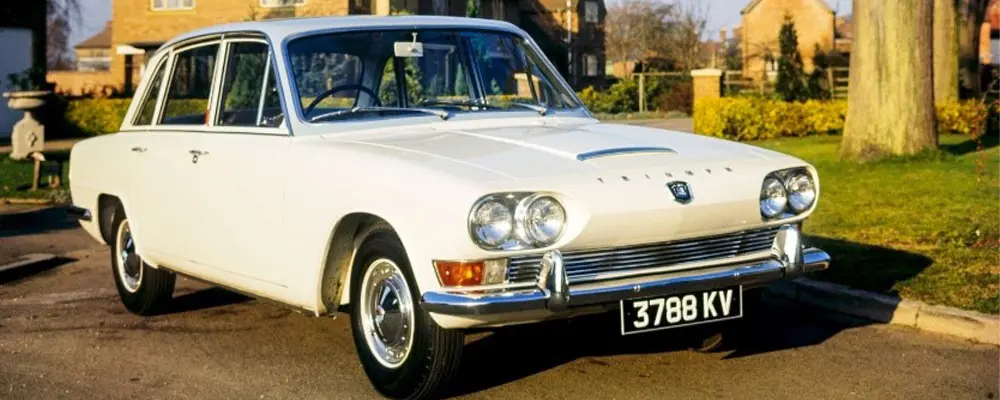The Triumph 2000 at 60
30 October 2023
When Motor Sport tested the Triumph 2000 in 1964, they described it as "a 6-cylinder, luxuriously equipped and styled family-type 5-seater saloon, likely to appeal to ordinary rather than discerning motorists". But owners would disagree with such snobbery, for the 2000 was a car for those who appreciated modern jazz and espresso coffee.
As Triumph's Director of Engineering Harry Webster noted in 1966, the marque's image was "for the man who can't afford caviar but doesn't want to live by bread alone". The 2000 embodied this philosophy, from its Giovanni Michelotti styling to its tasteful yet "contemporary" interior. Its launch on the 15th October 1963 also marked the demise of the Standard name after 60 years.

The Triumph 2000 may have shared a 1,998cc engine with its Vanguard Six predecessor, but its image could not have been more different. For much of the 1950s, the Standard Vanguard would be irrevocably associated with National Servicemen in baggy shorts somewhere in Aden or Malta, while the Triumph 2000 was not merely handsome but suave. The Guardian remarked: "In these days of social affluence the name 'Standard' seems to have the somewhat non-saleable connotations of 'basic' and the Triumph marque appears to be a much better seller in export markets".
By the early 1960s, Standard-Triumph's need to replace the Vanguard was acute. Just 9,953 examples of the Luxury Six departed the Canley factory between 1960 and 1963. At one point, they even considered building the Australian AMC Rambler as a Vanguard replacement. The Leyland takeover of Standard-Triumph in April 1961 provided the impetus and financial resources for Project Barb - the future Triumph 2000.
Barb’s development time was a remarkable 2 ½ years, as opposed to 5 ½ years for the Rover 2000. Leyland initiated a method of building a large number of prototypes, allowing each department to undertake work simultaneously. The launch advertisement proclaimed, "The masterly new six-cylinder Triumph 2000 introduces grande luxe motoring at a medium price".
At £1,094 1s 2d, the Triumph 2000 was more expensive than the Vanguard Six, but this was surely a reasonable sum for "a completely new class of motor-car". Autocar regarded it as advancing “a full rung up the social ladder” compared with the Standard. The sales copy also contained a not-very-subtle reference to the Ford Zodiac Mk. III and the Vauxhall Cresta PB. "Three people cannot sit in the twin front seats of the Triumph 2000. But for two people, it's really spacious and comfortable".
The Triumph's main rival at the 1963 London Motor Show was, of course, the Rover P6. The former was more conventional, without ever being staid, and offered more cabin room. Both targeted not just former P4 and Vanguard Six owners but also the Zodiac, the Cresta - and the Jaguar 2.4 Mk. 2. As Keith Adams observes:
Jaguar saloon production stagnated in the 1960s while both Rover and Triumph conquered new markets with their compact executive saloons. It would seem that the presence of both the new 2.0-litre cars proved intensely stimulating for the executive market sector as a whole, and sales of the new Triumph took off in a big way when sales commenced in earnest in January 1964.
The Daily Telegraph believed "The styling is typical of the best Italian and French practice", while Autocar thought, "All in all, the Triumph 2000 seems to have golden prospects". And it definitely was a car for motorists with discerning taxes - if not caviar, then the best Dublin Bay prawns.
